Categories
NexusStep by step configuration for vPC:
1. Enable vPC and lacp Feature:
2. Configure vPC domain:
3. Configure keep-alive (Please verify reachability using “Ping” command).
4. Configure Peer-link
We have to understand below things from above output.
Delay restore : To delay the virtual port channel (vPC) from coming up on the restored vPC peer device after a reload when the peer adjacency is already established, use the delay restore command.
Command under vPC domain: delay restore <seconds>
Delay restore interface-vlan (Delay-restore SVI): To allow Layer 3 routing protocols to converge and Forwarding Information Base (FIB) programming to complete for a more graceful restoration of switched virtual interfaces (SVI) on the restored virtual port channel (vPC) after the delay of the vPC from coming up on the restored vPC peer device, use the delay restore interface-vlan command.
Command under vPC domain: delay restore interface-vlan <seconds>
5. Configure member ports and down-stream device.
Useful commands:
Few things for you consideration:
1.
2.
3.
4. Click here to understand more about replacement procedure in vPC setup
L3 over vPC:
Let’s discuss about issue with L3 over vPC and how cisco came to out of it.
Data Plane issue : As we know that Loop Avoidance Rule for Traffic over Peer Link – Data Traffic received on the peer link cannot be forwarded and routed on a vPC. Here’s the example which we discussed earlier as well.
Control plane issue: TTL will be decremented which will lead us in below condition.
When peer routing is enabled TTL will not be incremented for packet forwarded to peer SVI. we have to use peer-router feature under vPC domain. Here’s the command:
 Please find link for more insight:
Please find link for more insight:
Video

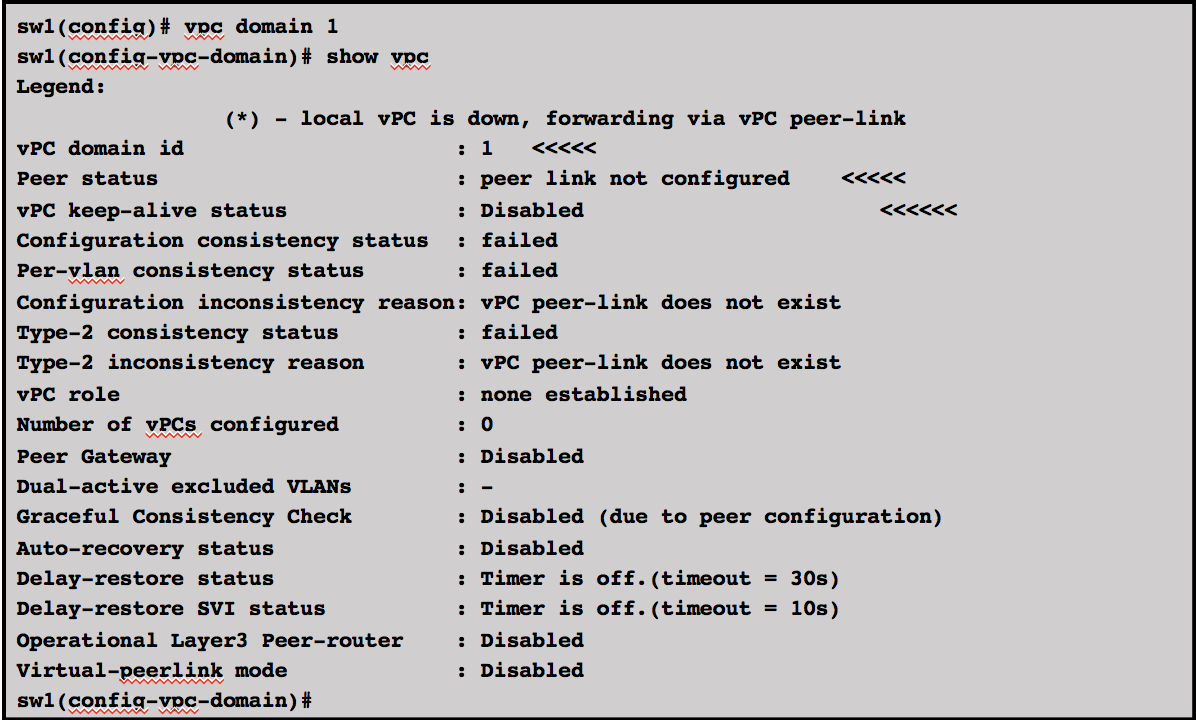
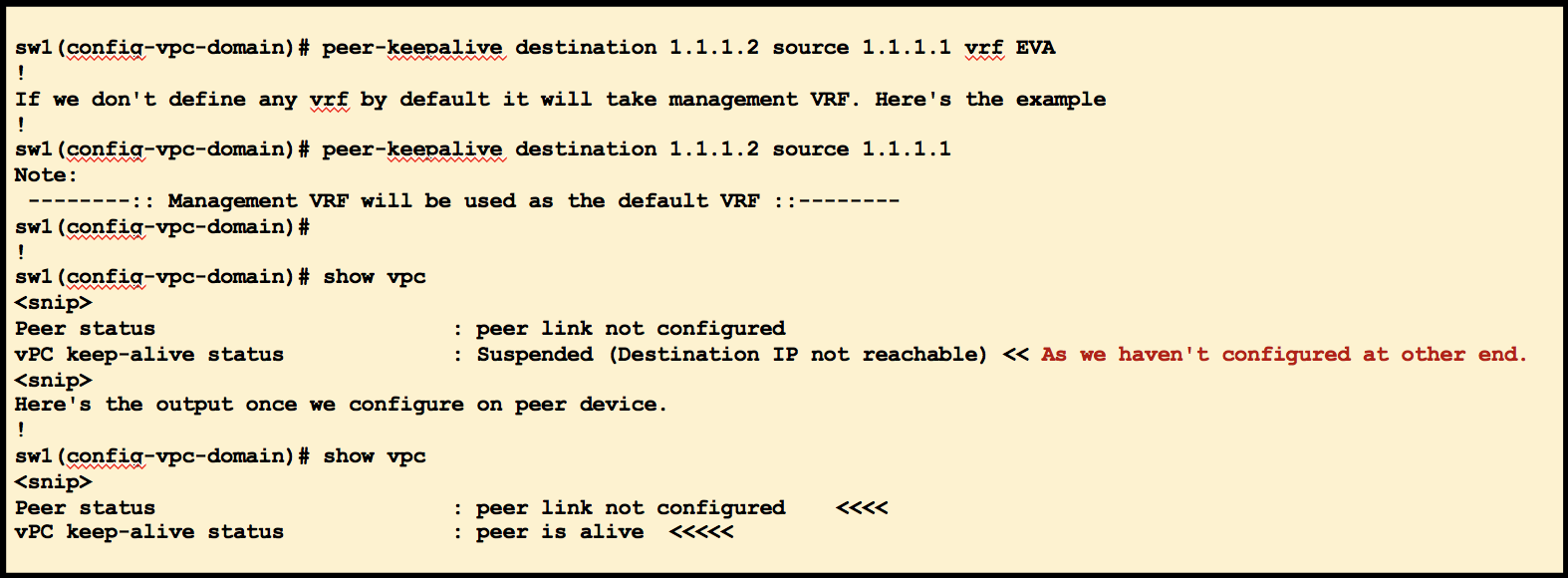
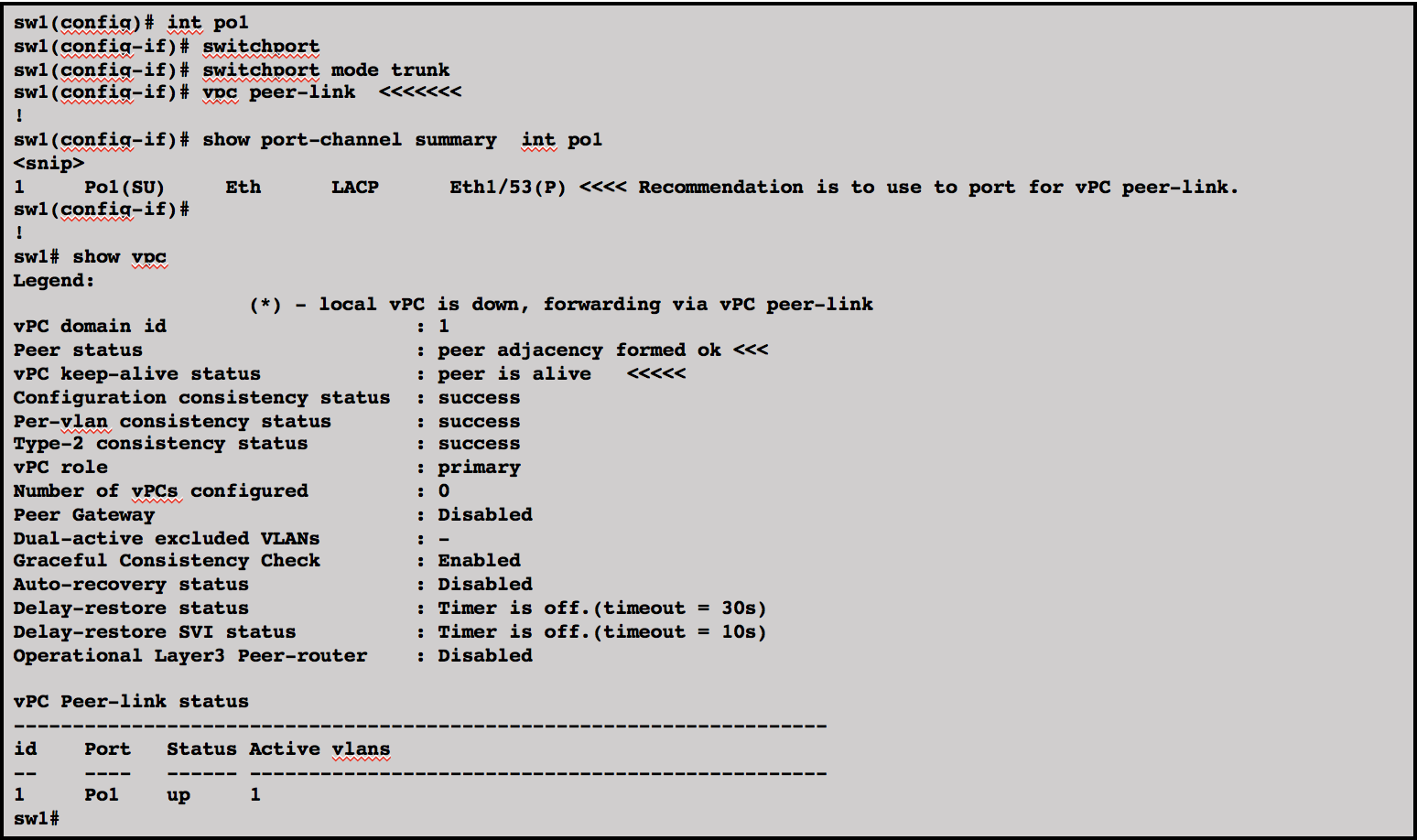

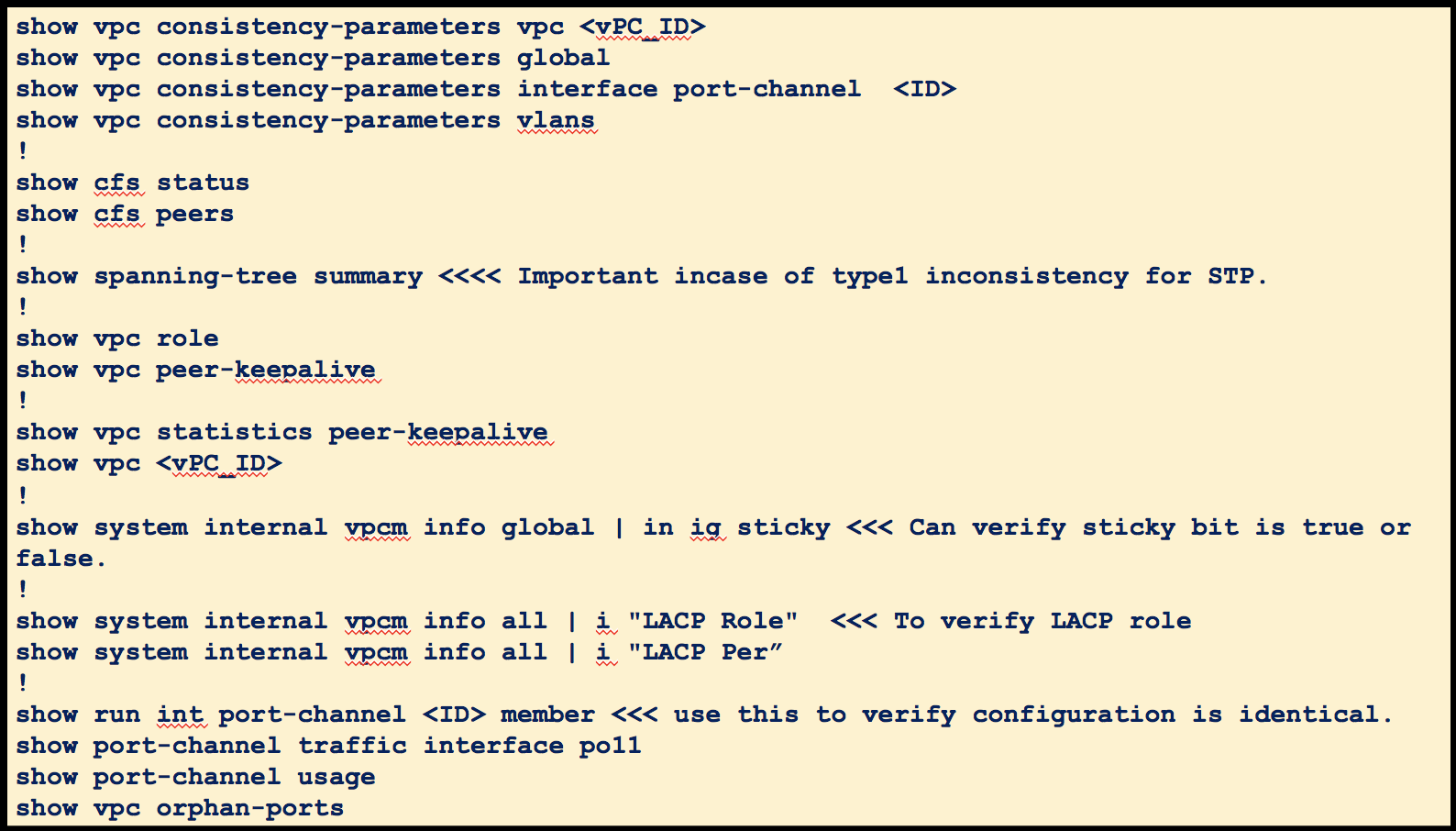
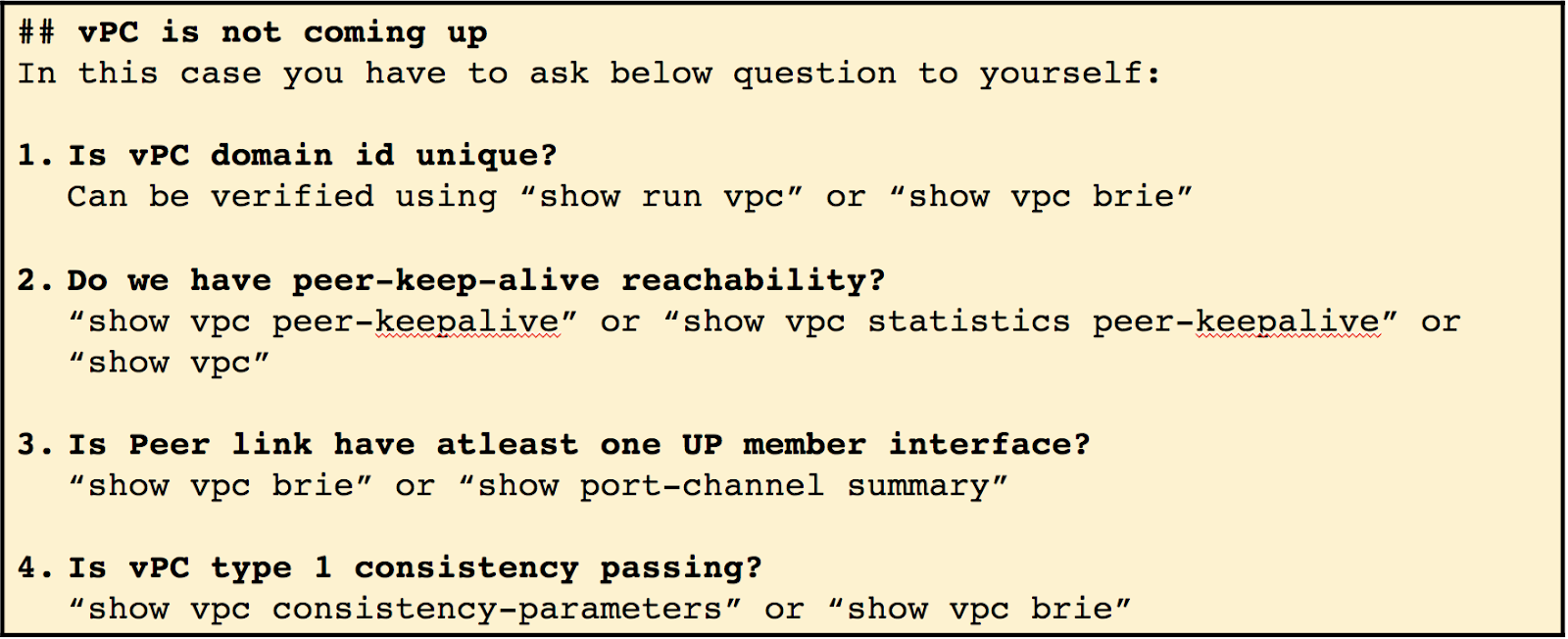

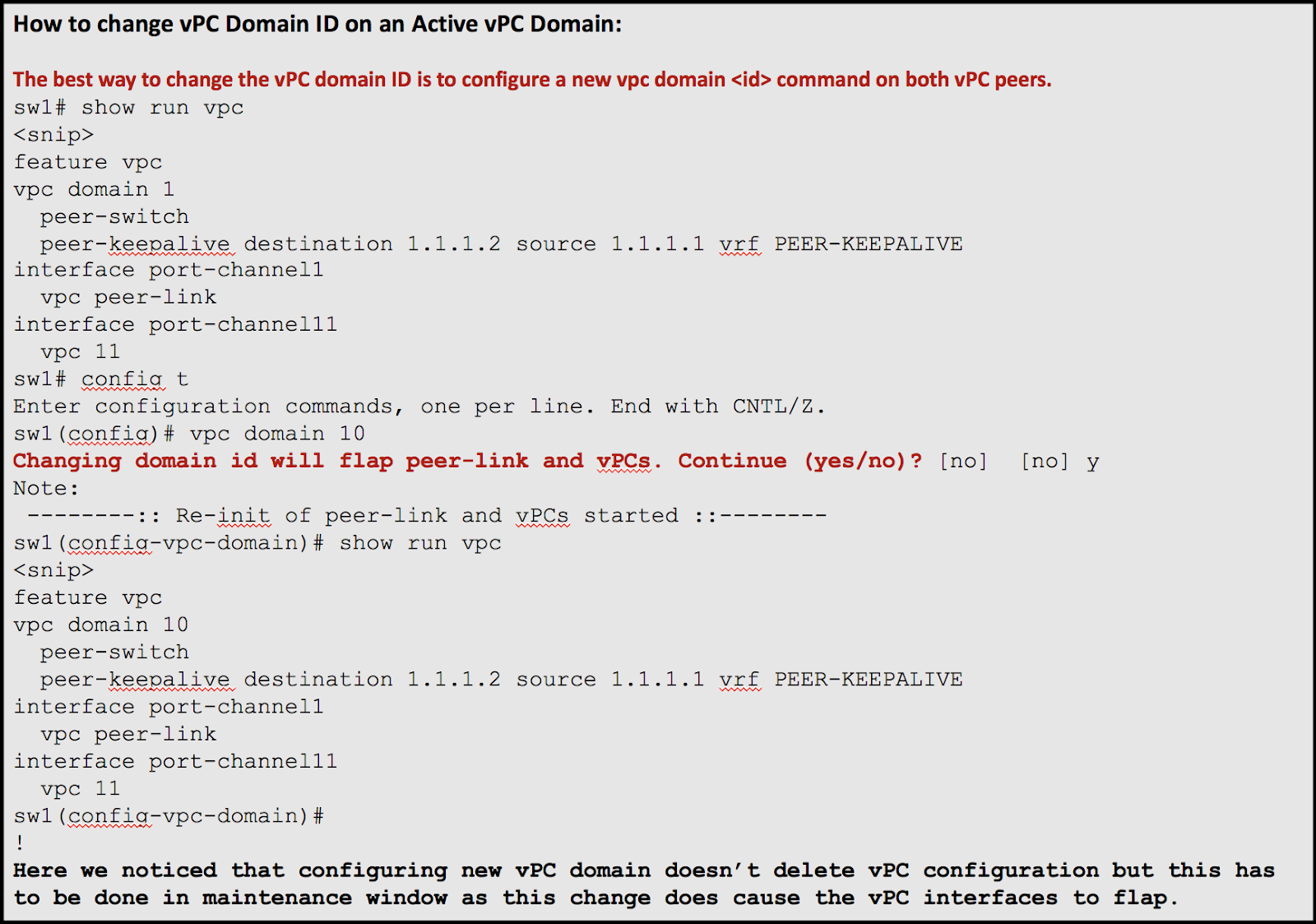
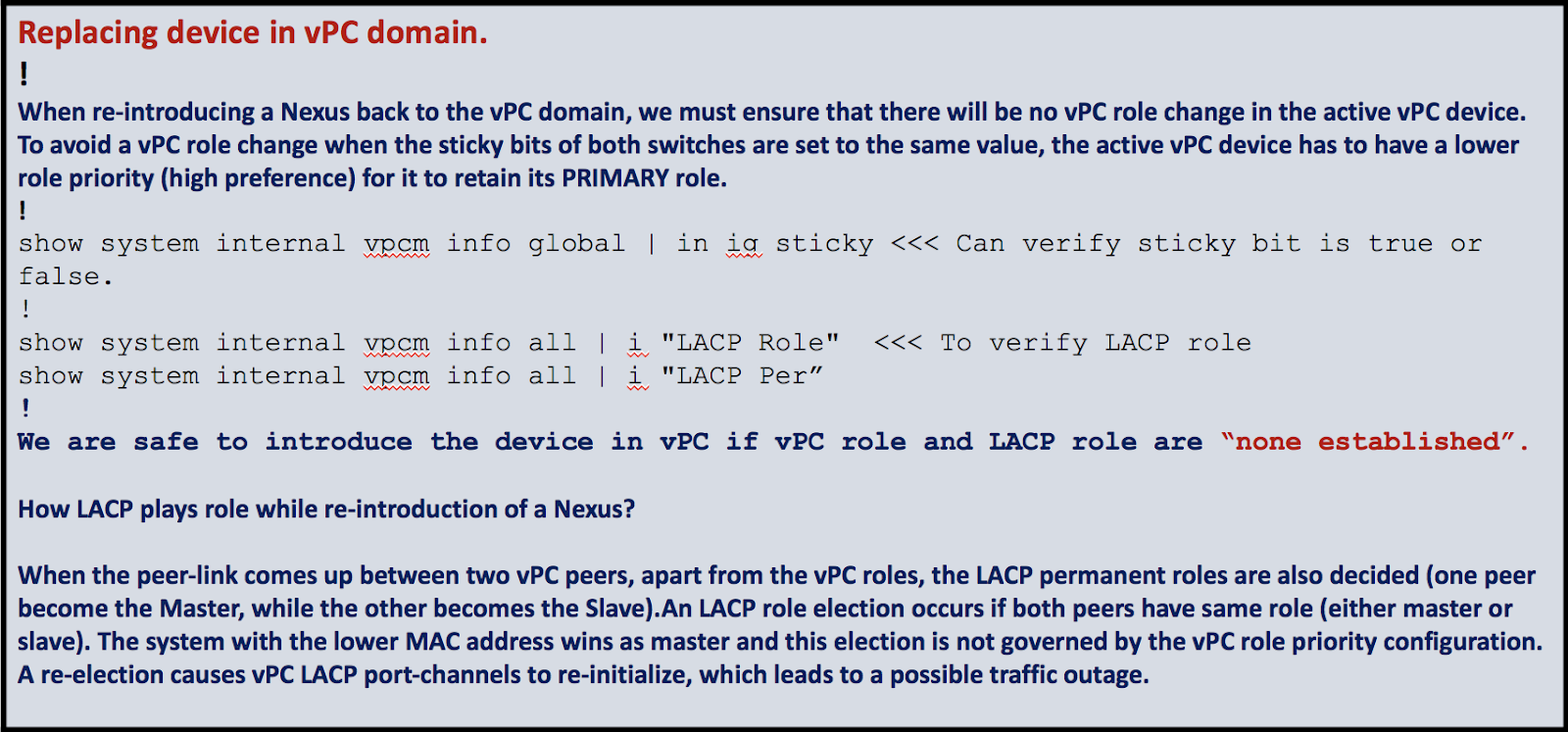
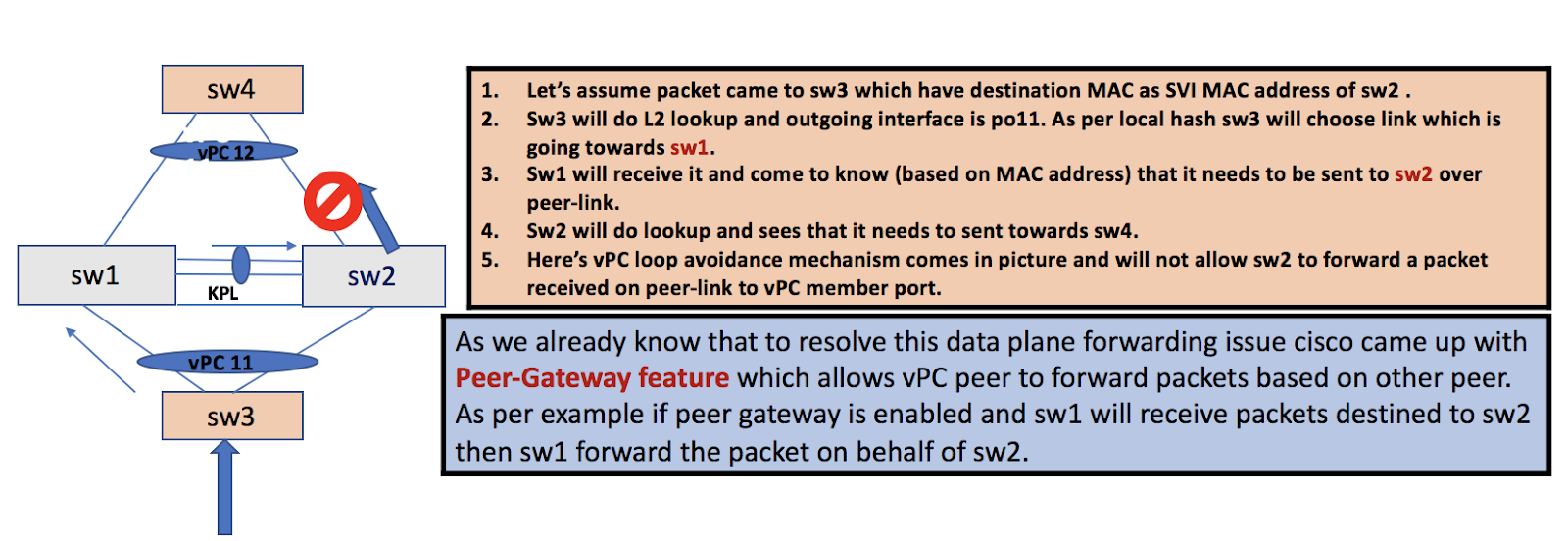

Thanks for the all relevent information about VPC.
So we can configure “spanning-tree port-type network on peer link interface and “spanning-tree port-type normal” on vpc member port.
Hi Shailesh,
Thanks for your feedback and reaching out to us.
As we know that “spanning-tree port type normal” as well as “spanning-tree port type network” are used on ports connected to switches, the difference between them is:
Normal: normal spanning-tree behaviour
Network: Enable spanning-tree with bridge assurance.
Let me come to your point.Cisco recommendation is to configure switch-to-switch ports as “spanning tree normal” when running vPC. The only port that it is recommended to run as type “network” is the vPC peer link. As soon as you configure “vPC peer-link” command under port-channel port type will automatically changed to “Network” and MTU will automatically changed to Jumbo.
Regards,
EvaNetwork Team
thanks for the information
Thanks for the good information about VPC. when peer-gateway configured mac-address learned for remote peers so the device will learn mac-address for orphan port as well.
Hello. excellent job. I did not imagine this. This is a splendid story. Thanks!
I have not checked in here for some time since I thought it was getting boring, but the last few posts are good quality so I guess I will add you back to my daily bloglist. You deserve it my friend 🙂
Hmm it appears like your blog ate my first comment (it was super long) so I guess I’ll just sum it up what I submitted and say, I’m thoroughly enjoying your blog. I too am an aspiring blog writer but I’m still new to the whole thing. Do you have any points for newbie blog writers? I’d definitely appreciate it.
I am perpetually thought about this, thankyou for posting.